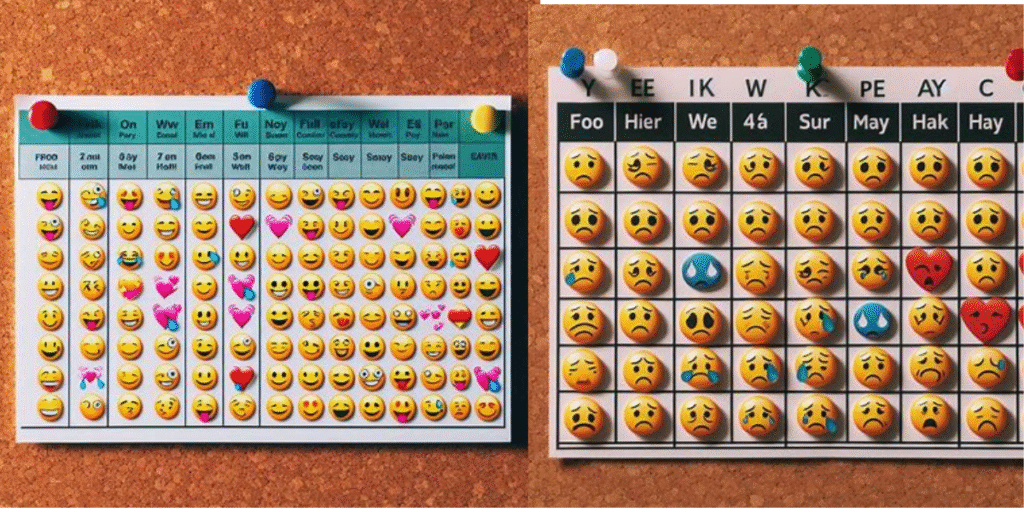In a world obsessed with instant gratification, we often chase fleeting highs, likes on a post, impulse buys, or binge-worthy distractions. But have you ever paused to ask how to escape the fleeting happiness trap? This article dives into the psychology behind short-lived joy and explores how we can shift toward deeper, more sustainable fulfillment.
The Cycle We All Know Too Well
You’re lying in bed, phone in hand, swiping through reels, tapping “Add to Cart,” smiling at a meme, and then… nothing. That hollow feeling creeps in. You’ve just ridden the rollercoaster of fleeting joy and crashed.

We live in a world engineered for instant gratification. But the truth is, most of what we chase doesn’t last. If you’ve ever wondered how to escape the fleeting happiness trap, you’re not alone and you’re not broken. You’re just caught in a cycle designed to keep you chasing.
Swipe Culture: Addicted to the Next Hit
Every swipe is a microdose of dopamine. Social media, shopping apps, even dating platforms, they’re built to keep you scrolling, craving, consuming. But here’s the catch: the more you swipe, the less satisfied you feel. It’s not your fault. It’s the design. The fleeting happiness trap thrives on novelty, not meaning.

Actionable tip: Try a 24-hour “Swipe Fast.” No social media, no shopping apps. Replace it with journaling or a walk. You’ll feel the difference in your mental clarity.
Spend: The Illusion of Fulfillment
We buy things to feel better. A new gadget, a trendy outfit, a course we may never finish. For a moment, it works. You smile. You feel in control. But soon, the thrill fades. You’re left with clutter, regret, and a lighter wallet. That’s the fleeting happiness trap at work, selling you joy that expires.

Actionable tip: Before buying anything, ask: Will this still make me happy in 30 days? If not, pause. You’re rewiring your brain for lasting satisfaction.
Smile: The Filtered Joy
We post, we pose, we perform. The likes roll in. The comments feel good. But behind the screen, many of us feel disconnected, anxious, even lonely. This is the emotional cost of performative happiness. It’s not real joy, it’s a highlight reel. And it’s one of the most seductive parts of the fleeting happiness trap.

Actionable tip: Share something real. A struggle, a lesson, a moment of gratitude. Vulnerability builds connection, and connection builds lasting joy
Crash: The Emotional Fallout

After the swipe, the spend, the smile… comes the crash. You feel drained, empty, maybe even ashamed. You wonder why you’re not happier. This is the moment that matters most. Because it’s where awareness begins. Escaping the fleeting happiness trap starts with recognizing the crash, not avoiding it.
Actionable tip: When you feel the crash, don’t distract yourself. Sit with it. Ask: What was I really seeking? Often, it’s connection, purpose, or peace.
Shift: Building Real Joy
Lasting happiness isn’t flashy. It’s quiet, consistent, and deeply personal. It comes from meaningful work, deep relationships, creative expression, and service. It’s not about rejecting pleasure, it’s about choosing joy that lingers. Escaping the fleeting happiness trap means trading dopamine hits for emotional nourishment.

Actionable tip: Start a “Joy Journal.” Each night, write down one moment that felt real, not just exciting. Over time, you’ll train your brain to seek depth over speed.
Rewrite: Your New Happiness Script
You don’t have to live in a loop of swipe, spend, smile, crash. You can rewrite your script. You can choose joy that’s rooted, not rented. Escaping the fleeting happiness trap isn’t about perfection, it’s about intention. It’s about asking better questions, making slower choices, and trusting that real joy is worth the wait.
Actionable tip: Create a “Joy Filter” for your decisions:
- Does this connect me to others?
- Does this align with my values?
- Will this still matter in a month?
If the answer is yes, go for it. If not, pause. You’re building a life that feels good after the moment passes.
Final Thoughts
Fleeting joy isn’t evil—it’s just incomplete. It’s the sugar rush of emotion. And while it’s okay to indulge sometimes, it’s powerful to know how to escape the fleeting happiness trap.
You deserve joy that doesn’t vanish. You deserve peace that doesn’t depend on a purchase. You deserve connection that doesn’t need a filter. So next time you swipe, spend, or smile—pause. Ask yourself: Is this joy rented or rooted? That question alone can change everything.

While quick happiness may offer a momentary escape, it rarely nourishes us in the long run. Understanding why quick happiness doesn’t last is the first step toward building a life rooted in meaning, resilience, and emotional depth. True joy isn’t found in the rush—it’s cultivated in the quiet, intentional choices we make every day.
Next Read: Mood Tracking: Why Everyone Is Doing It (and How To KickStart It in 3 simple steps)
Next Read: Top 7 Money Traps Millenials Fall Into And How To Avoid Them
Next Read: Dopamine Decor: How To Style Your Home For Happiness




Pingback: Unlock 5 Hidden Settings to Supercharge Your Smartphone
Pingback: Dopamine Decor: 4 Ways To Style Your Home For Happiness
Pingback: The Numerology of Your Wardrobe: 5 Steps To Dress For The Day
Pingback: Why Smart People Waste The Most Time: 7 Fixes for You
Pingback: Social Media and Self-Worth: 6 Ways To Gain Confidence Again
Pingback: 5 Truths About the Psychology of Spending and Regret